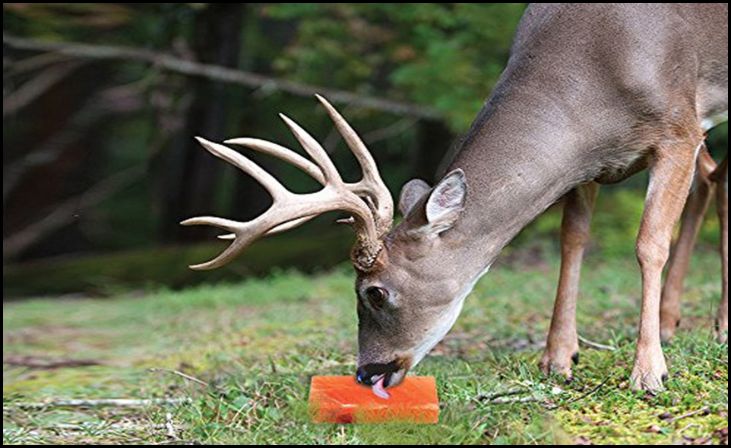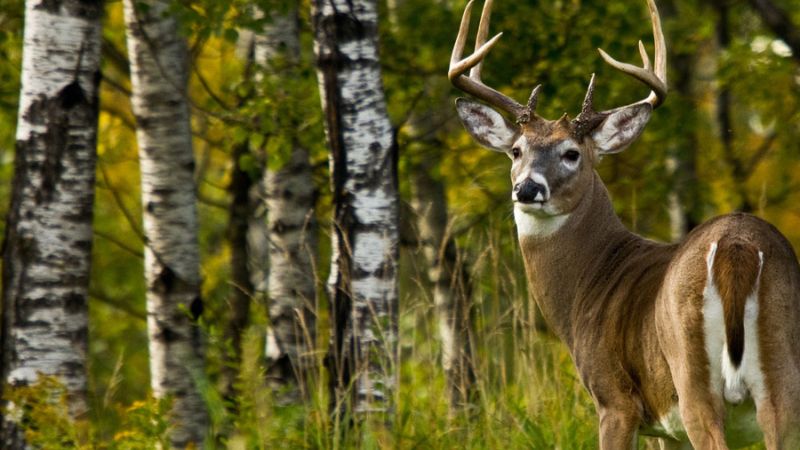If you’re looking to attract deer to your property, you’re in luck. With a little planning and the right approach, you can create an inviting environment for these graceful creatures. Here’s a comprehensive guide on how to attract deer using eight simple methods.
Why Attract Deer?
Whether you’re a wildlife enthusiast, a hunter looking to manage a sustainable deer population, or simply enjoy watching these beautiful animals, attracting deer to your yard can be a rewarding experience. By understanding their preferences and behaviors, you can create a habitat that meets their needs.
Understanding Deer Behavior
Deer are naturally cautious but curious creatures. They are always on the lookout for food, water, and safe shelter. By providing these essentials, you can draw them to your yard and keep them coming back.
Plants

Simply put, deer like food, but certain plants attract them more than others. For example, deer love petunias, which are not only visually appealing but also tasty snacks for deer. Sunflowers are another favorite due to their large, seed-filled heads that are irresistible to deer. Clematis, with its beautiful flowers, is a treat for deer and can be grown on fences or trellises. Dandelions, often considered weeds, are actually nutritious snacks for deer. Finally, clover, especially the red and white varieties, is a deer magnet, providing a lush and nutritious food source.
Apples
Deer have a sweet tooth and apples are one of their favorite treats. The scent and taste of apples are very appealing to deer, making them an excellent choice for attracting these animals. Smaller apples, like crabapples, are particularly effective because they are easier for deer to eat. However, any type of apple will do. You can simply pile apples in your yard or scatter them around to create a natural foraging experience. If you have an apple tree, even better—deer will be drawn to the fallen fruit.
Peanut Butter
Peanut butter is a high-protein, high-fat food that deer find irresistible. Its strong scent can travel long distances, drawing deer in from afar. One easy method is to smear peanut butter on tree trunks at deer height. Alternatively, you can remove the lid from a jar of peanut butter, make a few holes in the lid, and nail the jar to a tree. This way, deer can lick the peanut butter through the holes. While peanut butter is safe for deer in small quantities, avoid overfeeding. Also, ensure the jars or containers do not pose a choking hazard or other dangers.
Salt Blocks

Salt blocks, also known as salt licks or mineral blocks, are compressed blocks of salt that may also contain other minerals like iron and zinc. They are widely used in wildlife management to attract and nourish deer. Salt blocks provide essential minerals that deer need for bone development, digestion, and overall health. During certain times of the year, deer actively seek out salt and minerals, making these blocks particularly effective. Place salt blocks in areas where deer are likely to frequent, such as near water sources or trails. Ensure the location is somewhat secluded to make deer feel safe while they lick the block.
Herbs
Herbs can provide both nutrition and medicinal benefits to deer. They often have a strong scent that can attract deer from a distance. Red clover is highly nutritious and palatable to deer. It’s a perennial plant, meaning it will come back year after year, providing a reliable food source. Alsike clover is another excellent choice. It grows well in a variety of soils and climates, making it a versatile option for attracting deer. White ladino clover is a large variety that produces an abundance of leaves, perfect for grazing deer. It’s hardy and easy to grow, making it a popular choice for wildlife plots.
Food Plots
A food plot is a dedicated area where you grow plants specifically to feed wildlife. For deer, this can include a variety of grasses, legumes, and other forages. To create a food plot, choose a location that is easily accessible for deer but offers some cover for safety. Prepare the soil by testing and amending it as necessary to ensure optimal growing conditions. Select a mix of plants that will provide nutrition throughout the year. Plant your chosen seeds and maintain the plot by watering, weeding, and fertilizing as needed. Regularly monitor your food plot for signs of overuse or damage. Rotate crops annually to maintain soil health and prevent disease.
Winter Feeding
Winter can be a tough time for deer, as natural food sources become scarce. Providing supplemental food can help deer survive the harsh conditions. Consider high-energy foods like corn, soybeans, and specially formulated deer pellets. These provide the necessary calories and nutrients deer need during the cold months. Place feeding stations in areas sheltered from the wind and accessible to deer. Keep the feeding area clean to prevent the spread of disease and regularly refill the food to ensure a consistent supply.
Additional Herbs

Other scented botanicals that deer enjoy include lavender, which adds a pleasant aroma to your garden while attracting deer. Echinacea, or coneflower, is another herb that deer love. It’s easy to grow and provides a good source of nutrients. New England aster, a late-blooming flower, can attract deer when other food sources are dwindling. Its vibrant colors and sweet nectar are hard for deer to resist. Plant these herbs around the perimeter of your garden or in dedicated patches to create an inviting environment. Mixing these with other deer-attracting plants can enhance the overall appeal of your yard.

